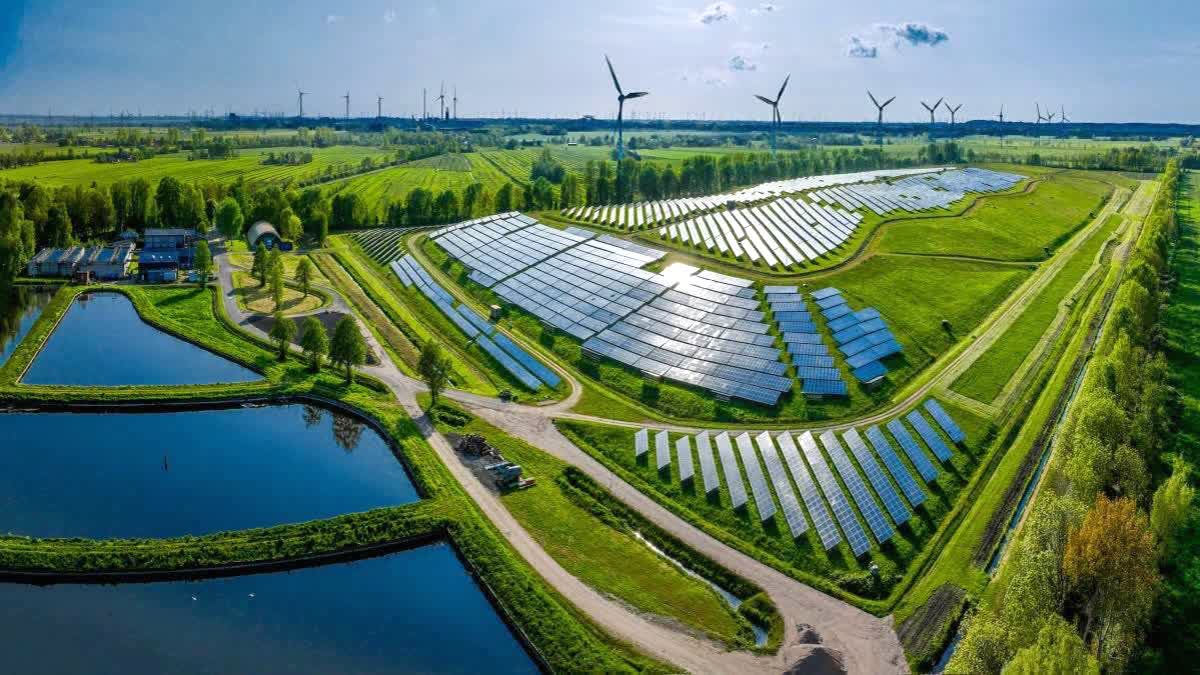Hyderabad: Clean energy is key to supporting communities lacking access to reliable power sources – still today, 675 million people live in the dark – 4 in 5 are in Sub-Saharan Africa – in securing education, healthcare, and economic opportunities, and halting the reliance on polluting fossil fuels for their daily life, perpetuating poverty. If current trends continue, by 2030 one in four people will still use unsafe, unhealthy, and inefficient cooking systems like burning wood or dung.
The International Day of Clean Energy is celebrated on 26 January, it is a global event that aims to raise awareness and mobilise for a fair and inclusive transition to clean energy for the benefit of people and the planet.
About the Day:The International Day of Clean Energy on 26 January was declared in 2023 by the General Assembly (resolution A/77/327) as a call to raise awareness and mobilise action for a just and inclusive transition to clean energy for the benefit of people and the planet.
26 January also marks the founding anniversary of the International Renewable Energy Agency (IRENA), a global intergovernmental agency established in 2009 to support countries in their energy transitions, serving as a platform for international cooperation, providing data and analyses on clean energy technology, innovation, policy, finance, and investment.
What is “Clean Energy”? Clean energy is energy that comes from renewable, zero-emission sources that do not pollute the atmosphere when used, as well as energy saved by energy efficiency measures. Adopting clean energy is integral to the fight against climate change. A large chunk of the greenhouse gases that blanket the Earth and trap the Sun’s heat are generated through energy production, by burning fossil fuels (oil, coal, and gas) to generate electricity and heat.
The Importance of Clean Energy
Key Points:
- Over 75% of global greenhouse gas emissions come from burning fossil fuels for energy.
- Polluting fuels for cooking cause 3.2 million premature deaths annually; clean cooking can prevent many of these.
- Every $1 invested in renewables creates 3X more jobs than in the fossil fuel industry.
Our world runs on the energy we produce. Clean energy production allows us to generate the energy we need without the greenhouse gas emissions and negative environmental effects that come with fossil fuels, in turn helping to reduce climate change.
Energy lies at the core of a double challenge, leaving no one behind and protecting the planet. And clean energy is crucial to its solution. The connection between clean energy, socio-economic development, and environmental sustainability is crucial in addressing issues faced by vulnerable communities worldwide. For populations without clean energy access, the lack of reliable power hinders education, healthcare, and economic opportunities, and many of these developing regions still rely heavily on polluting fossil fuels for their daily life, perpetuating poverty. If current trends continue, by 2030 one in four people will still use unsafe, unhealthy, and inefficient cooking systems, such as burning wood or dung. Although this situation has been improving, the world is not on track to achieve Sustainable Development Goal 7 (SDG7), aiming to ensure access to affordable, reliable, sustainable, and modern energy for all by 2030.
Examples of Clean Energy
Solar energy
Solar energy is the most abundant of all energy resources and can even be harnessed in cloudy weather. The rate at which solar energy is intercepted by the Earth is about 10,000 times greater than the rate at which humankind consumes energy.
Wind energy
Wind energy harnesses the kinetic energy of moving air by using large wind turbines located on land (onshore) or in sea, or freshwater (offshore). Wind energy has been used for millennia, but onshore and offshore wind energy technologies have evolved over the last few years to maximise the electricity produced - with taller turbines and larger rotor diameters.
Geothermal energy
Geothermal energy utilises the accessible thermal energy from the Earth’s interior. Heat is extracted from geothermal reservoirs using wells or other means. Reservoirs that are naturally sufficiently hot and permeable are called hydrothermal reservoirs, whereas reservoirs that are sufficiently hot but that are improved with hydraulic stimulation are called enhanced geothermal systems.
Hydropower
Hydropower harnesses the energy of water moving from higher to lower elevations. It can be generated from reservoirs and rivers. Reservoir hydropower plants rely on stored water in a reservoir, while run-of-river hydropower plants harness energy from the available flow of the river. Hydropower reservoirs often have multiple uses - providing drinking water, water for irrigation, flood and drought control, navigation services, as well as energy supply.
Ocean energy
Ocean energy derives from technologies that use the kinetic and thermal energy of seawater – waves or currents for instance - to produce electricity or heat. Ocean energy systems are still at an early stage of development, with several prototype wave and tidal current devices being explored. The theoretical potential for ocean energy easily exceeds present human energy requirements.
